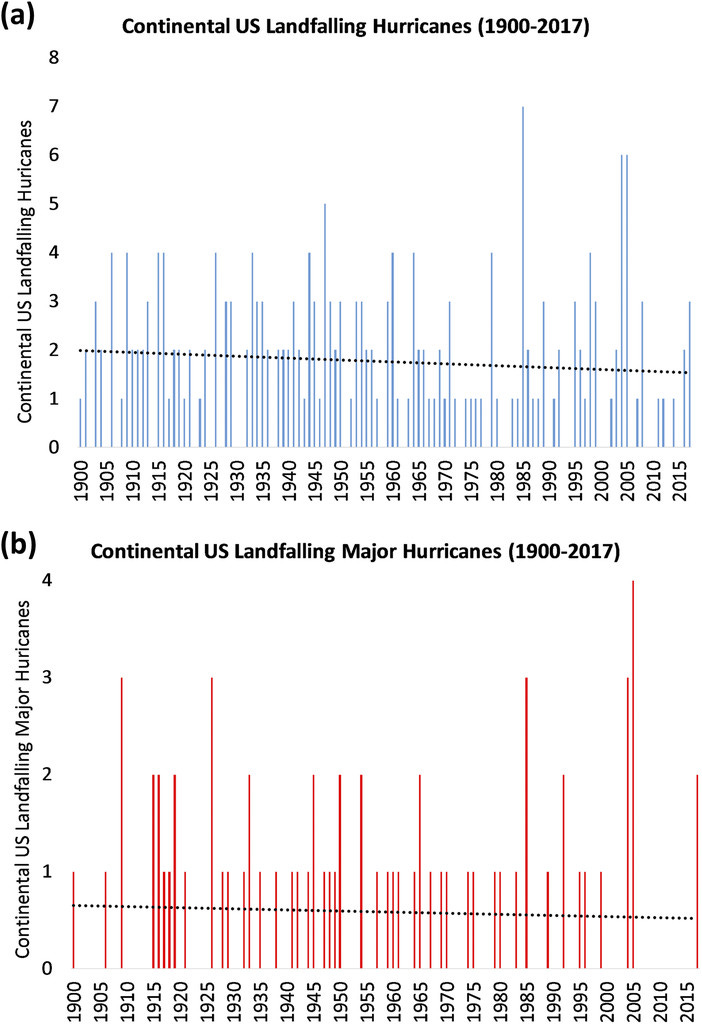Historical Data vs. Modern Hysteria: The Truth About Hurricanes
How IPCC and NOAA Data Challenge Common Climate Change Narratives
Hurricane Beryl recently made history as the earliest hurricane to reach Category 4 intensity on record, with significant strengthening occurring in late June 2024.
However, it's crucial to recognize that our ability to accurately measure and scale the power of hurricanes primarily began with the advent of satellite technology in the mid-20th century and our knowledge continues to evolve. Before this era, hurricane records, particularly those over open water, were less reliable and often based on ship reports and coastal observations, which lacked the precision of modern satellite data.
When examining the best available long-term data, such as the record of U.S. landfalling hurricanes since 1900, there is no clear trend in the frequency or intensity of hurricanes making landfall in the U.S.

This perspective is essential when considering claims about the increasing power and frequency of hurricanes due to climate change. The variability observed in hurricane data over such a short period (relative to Earth's 4.5 billion-year history) makes it impossible to draw definitive conclusions about long-term trends without considering the broader historical context.
The Intergovernmental Panel on Climate Change (IPCC) and the National Oceanic and Atmospheric Administration (NOAA) acknowledge no significant trend in the frequency or intensity of North Atlantic hurricanes. The IPCC's Fifth Assessment Report states,
Keep reading with a 7-day free trial
Subscribe to Irrational Fear to keep reading this post and get 7 days of free access to the full post archives.




